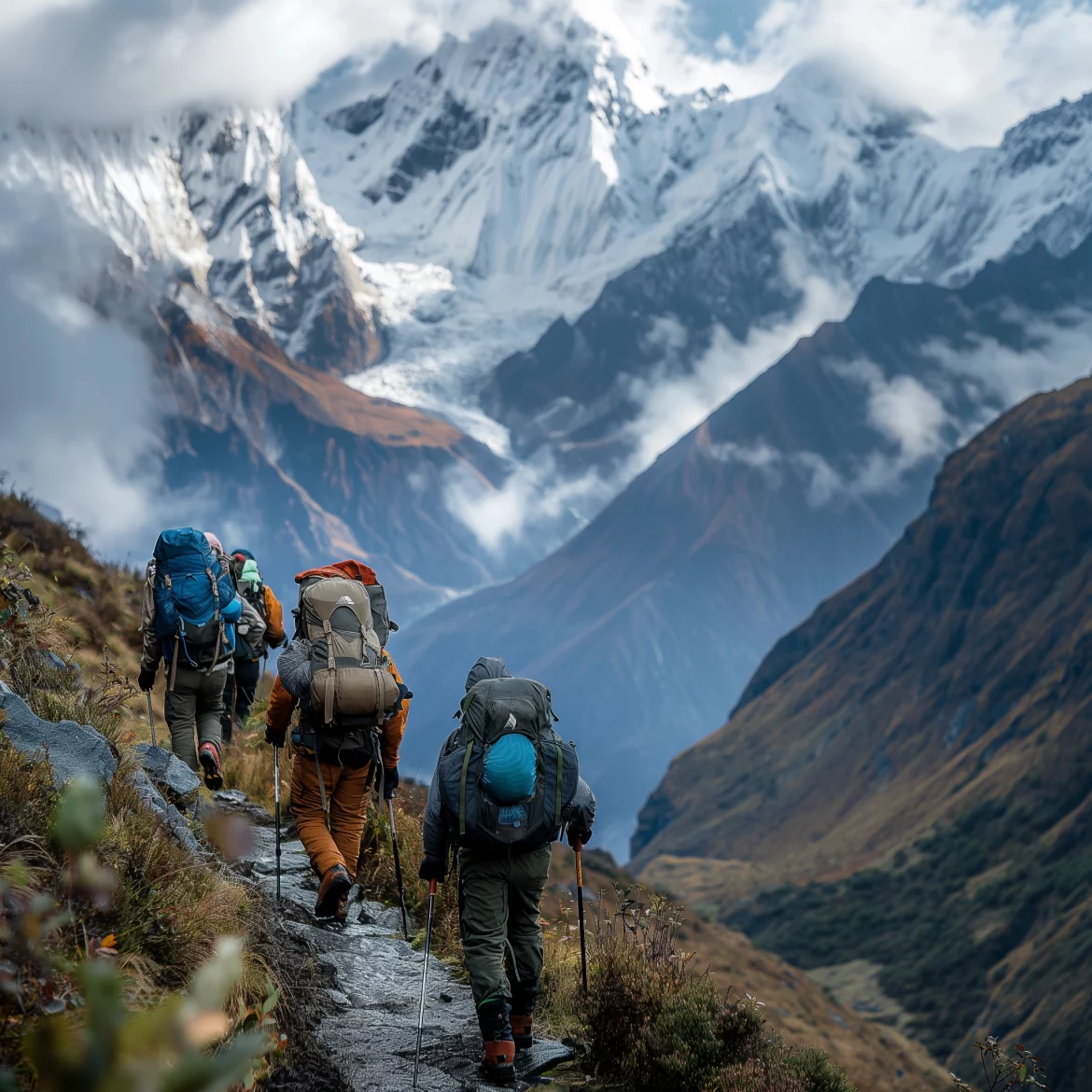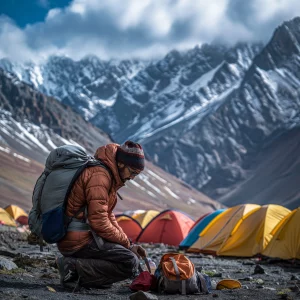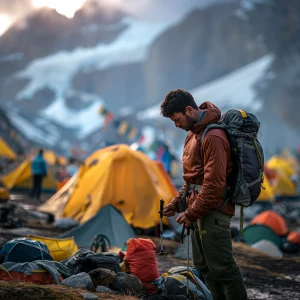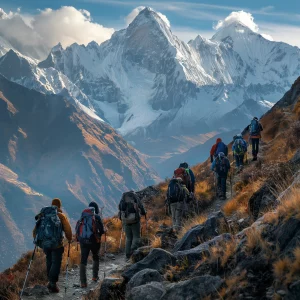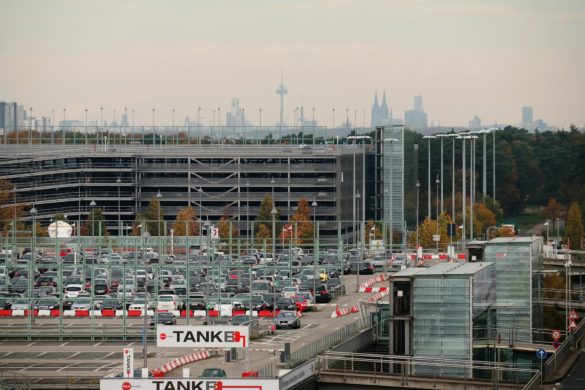Setting out on a trek through the majestic Himalayas requires meticulous preparation to ensure safety, comfort, and a truly enriching experience. The right essentials—from specialised gear and appropriate clothing to crucial documentation and nutritional provisions—can distinguish between a challenging adventure and a perilous ordeal.
This guide highlights the top essentials for navigating the Himalayan terrain’s diverse and often harsh conditions. It covers everything from the types of backpacks suited for various journey stages to the layered clothing necessary for thermal regulation and the technical equipment designed for high-altitude environments. Understanding these essentials will equip trekkers with the knowledge to pack smartly and efficiently, ensuring a memorable and safe exploration of one of the world’s most awe-inspiring landscapes.
Essential Backpack Types and Their Functionalities
When planning a trek in the Himalayas, choosing the right type of backpack is critical. The two primary types of backpacks used are the daypack and the main backpack. The daypack is smaller and designed for short trips or day-to-day needs. It typically contains compartments for essentials such as passports, mobile devices, and a basic first-aid kit. Its compact size makes it ideal for personal items that might be needed quickly.
The main backpack, however, is much larger and designed for bulk storage. It is often carried by porters or pack animals on longer treks and contains clothing, additional gear, and sometimes food supplies. These backpacks’ design focuses on maximising space while ensuring the weight is distributed evenly to prevent strain over long periods of trekking.
Clothing and Footwear Strategies
Appropriate clothing is paramount for any trekker venturing into the Himalayas. The strategy of layered clothing is widely advocated, with a synthetic base layer that offers UV protection and wicks moisture away from the body. This is followed by insulating mid-layers that retain heat under cold conditions and a waterproof outer layer that shields against rain and wind.
Footwear is equally crucial, as the varied terrain of the Himalayas demands durable and water-resistant boots. Specialised hiking boots with good ankle support and a rugged sole are essential for maintaining grip on slippery or uneven surfaces. The importance of proper footwear cannot be overstated, as it directly impacts the trekker’s comfort and safety.
Gear and Accessory Essentials
Regarding gear, trekkers should focus on high-quality, roomy trekking packs that offer protective features against the elements. Accessories play a vital role in a successful trek; UV-protective sunglasses and headlamps are indispensable for protection against the strong sunlight and navigating during dark hours. Trekking poles are another essential tool, providing stability and support, particularly on steep or rocky paths.
Health, Safety, and Nutrition Considerations
A comprehensive medical kit is a must-have, equipped with medications for common ailments such as altitude sickness and a variety of first-aid supplies. Hydration is another critical aspect, with trekkers advised to carry multiple water bottles or hydration packs to maintain adequate hydration levels. Energy-rich snacks like nuts, dried fruits, and energy bars should also be included to replenish calories burned during long days of trekking.
High SPF sunblock and thermal hats are necessary for protection against the harsh sun and wind. These protect the skin and head from potential sunburn and frostbite, which are common concerns at high altitudes where UV exposure is significantly higher.
By combining historical backpacking practices with modern technological advancements in gear and clothing, trekkers can ensure they are well-prepared for the demanding conditions of the Himalayas. This approach not only enhances safety and comfort but also enriches the overall trekking experience by allowing adventurers to focus on the region’s breathtaking landscapes and cultural richness rather than on preventable discomforts or hazards.
Sleep and Camp Equipment
Ensuring a good night’s rest is crucial when trekking through the Himalayas, where temperatures can plummet dramatically after sunset. High-quality sleeping bags designed for extreme cold are essential. These bags are typically rated for temperatures well below freezing and use advanced insulation materials to retain heat. Accompanying these should be sleeping mats or pads that provide insulation from the cold ground, which is crucial for maintaining body heat and comfort throughout the night.
For those who prefer minimalistic or emergency setups, a bivouac sack (bivi sack) can be a lifesaver. These waterproof covers for sleeping bags add a layer of warmth and protection against the elements, allowing trekkers to sleep outdoors without a tent if necessary. Adding a sleeping bag liner can also enhance warmth and hygiene, as liners can be easily washed, thereby extending the sleeping bag’s life.
Documentation and Financial Preparations
Ensuring all necessary documentation is in order before embarking on any trek in the Himalayas. This includes having a valid passport, necessary visas, and any other identity proofs required by local authorities. These documents should be kept in a waterproof holder to protect against moisture and accidental damage.
Financial preparations are equally important. It is advisable to carry accessible funds in the local currency for purchases where credit cards might not be accepted. Understanding the local economy and having small denominations can facilitate smoother transactions in remote areas where digital transactions may not be possible.
Enhancing the Trekking Experience
Navigating the Himalayas is a physical challenge and an operational and cultural journey. Having knowledgeable guidance, either through experienced guides or thorough research, is essential for complying with local norms and regulations. Guides can offer invaluable insights into less-known paths and local lore, enriching the trekking experience.
Moreover, engaging with local economies and consuming responsibly is fundamental to ethical travel practices. Trekkers should strive to support local businesses by purchasing local goods and services, which not only enhances the local economy but also reduces the ecological footprint of their journey.
Preparing for the Unexpected
The Himalayas pose unique environmental and logistical challenges that require robust preparation. The remote and rugged terrain necessitates packing efficiently—every item in a backpack must justify its weight. Utilising porter services can alleviate the physical burden of carrying heavy loads. Still, it is essential to manage these loads efficiently to ensure that neither the trekker nor the porter is overburdened.
Furthermore, preparation for varying weather conditions is crucial. Weather in the Himalayas can change abruptly, and trekkers must be equipped with gear that can handle various climatic conditions, from sudden rainstorms to intense sunlight.
Wrapping Up
Trekking the Himalayas is a testament to human adaptability and resilience. From survival roots to accommodating modern technological advancements, the evolution of backpacking gear and practices demonstrates a remarkable capacity to adapt to both military needs and recreational pursuits. Modern backpacking equipment’s efficient and functional design and strategic decisions regarding renting versus buying gear showcase an ongoing commitment to cost-effective and environmentally conscious trekking practices.
Layering clothing for environmental adaptation, prioritising health and safety with comprehensive medical preparations, and upholding ethical standards through cultural engagement and support for sustainable practices illustrate a deep understanding of both the challenges and responsibilities of trekking in such a formidable landscape.
Through careful preparation, respect for local cultures and environments, and an appreciation for the historical context of backpacking, trekkers can ensure that their journeys are personal achievements and contributions to the sustainable and ethical exploration of one of the world’s most majestic regions.


